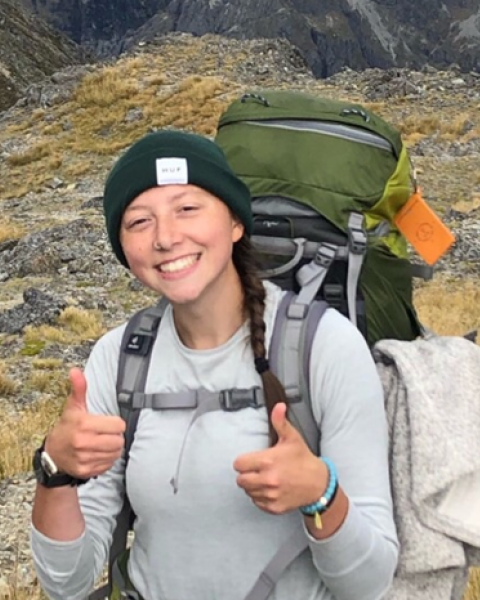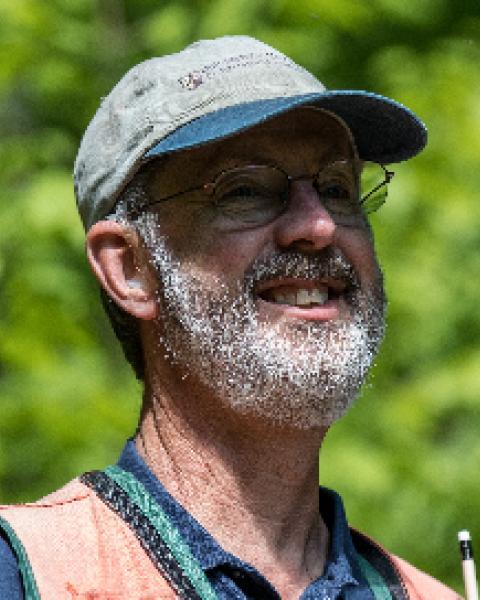On the Hunt for Red Oak

Hello UNH Cooperative Extension Colleagues and Friends,
It’s County Farm Woodlot intern Brooke Gauthier with another post about my summer internship!
Harvesting the Forest
The Merrimack County Farm woodlot is 363-acres located behind the Merrimack County Nursing Home. This forest is mature and overstocked, meaning all growing space is being used, leading to slowed growth of the trees. When a stand is overstocked, it is important to take some of the wood out, allowing the forest to continue growing. With this knowledge, Merrimack County Forester Tim Fleury decided it would be logical to conduct a shelterwood harvest, a timber cutting technique that cuts wood on a several acre area to create an even-aged (or single-aged) forest. Shelterwood harvests removes trees that have reached their maximum product value to allow for growing space and natural regeneration of the land. Some mature trees in the stand are left behind for seed purposes or wildlife trees..
The premise of the cut was to establish and manage for red oak. The shelterwood harvest Tim Fleury managed happened in two stages—cutting in 2009 to establish regeneration and then removing remaining overstory trees in 2015 once the regeneration was established. This 2015 cutting, called an overstory removal, looks like a clearcut since the larger trees are removed, but the stand is well-stocked considering the next forest is growing in. Between the good genotypes (genetic make-up) of the red oaks already located on the stand and good quality soils, the site has a high potential to grow high value red oak for wildlife and timber.
My Internship
The cutting operation and importance of red oak led to my second project this summer—a regeneration survey, overseen by Tim Fleury, managed in a 35-acre overstory removal in Boscawen.
In order to determine the regeneration within the opening, Tim Fleury created a set inventory method for him and I to use. This survey is to determine how successful the harvest was in establishing regeneration. Tools used include a compass, a 3.5 foot stick, a middle-plot stake, flagging tape, clipboard and data sheets.
Taking Data

Here is an aerial photo of the 35-acre shelterwood harvest. The blue dots represent the regeneration survey plots. The photo is oriented so that north is on the top.
Starting at the southwest corner of the harvest, in the panhandle, we paced 100 feet due east. Once we reached 100 feet, we unbiasedly placed a stake into the ground, representing the mid-point of the plot. Then, a 3.5 foot stick was swung around the plot with zero starting at the plot's mid-point. All stems within a 3.5 foot radius of the plot were counted and recorded. Species and an estimate of the height was determined. Height was placed into four categories—0-2 feet, 2-6 feet, 6-10 feet and over 10 feet.

Me using a compass in the middle of the 2009 regeneration.
Once the plot was taken, several plots going south were taken until the edge of the harvest area was reached. When the edge was reached a plot was taken going east, again, and then plots going north.
I'm repeating this process. Though I have not yet finished collecting data, I am expecting to take about 160 plots in total. I am also entering data into an excel spread sheet to allow for data analysis of species density based on location in the harvest.
The majority of regeneration found thus far is backberry, black raspberry, eastern white pine, beech, red oak, black birch and paper birch. Deer have heavily browed the majority of red rak individuals under six feet and some hemlocks.

Me counting stems at a plot in the panhandle section of the harvest.
How many oak seedlings do we want per acre?
Ideally, the stand will have a couple hundred regenerating red oak per acre. At maturity the stand only need 50-60 well distributed and dominant red oaks.
Looking at a stocking guide can help determine whether the stand is at maturity and needs to be cut. For an even-aged stand, the A-line shows the maximum limit of basal area density for a productive forest while the B-line shows the ideal density for sawtimber growth. By looking at trees per acre and basal area per acre, a forester or landowner can determine if a stand is ready to be thinned or harvested.

Here is a picture of a stocking guide for an even-aged stand, taken from Good Forestry in the Granite State.
Red Oak Workshop
After surveying about half of the harvest, I was invited to a Red Oak Workshop located at Fox Forest in Hillsborough on June 28. At this workship I heard lectures on red oak ecology, management and wildlife habitat from forestry legends like Bill Leak, Ken Desmarais and Mariko Yamasaki. In the afternoon we took a small hike around the Fox Forest to examine a tree crop release, a shelterwood and a group cut. The majority of attendees were foresters or students wanting to learn more. This workshop really helped to expand my knowledge and appreciation for red oak.
At the workshop I learned early successional stages of forest development (i.e. young forests) are extremely important for several different bird species, deer and small mammals (such as chipmunks). This area provides habitat and food sources for about 10 years for early successional wildlife.
I also learned the logging equipment helps "plant" the acorns. The site was disturbed from the movement of logging equipment. This is called soil scarification (tilling or mixing of the topsoil) and it promotes the germination of red oak. Once red oak acorns drop, the logging eqipment can bury the acorns into the soil, protecting the seeds from chipmunk and other regeneration related predation.
Other
Besides the regeneration survey I have begun marking a timber sale with Carroll County Forester Wendy Scribner. I have also begun to take pictures of trails for Extensions Nature Specialist Emma Tutien to add to Trail Mapper.


